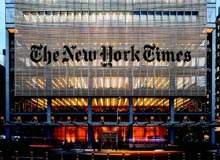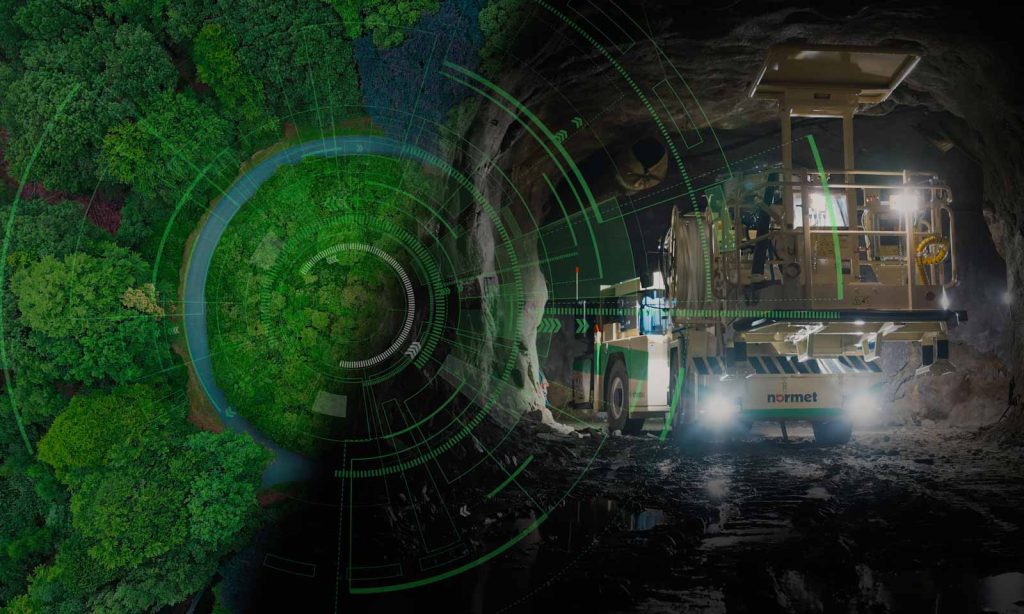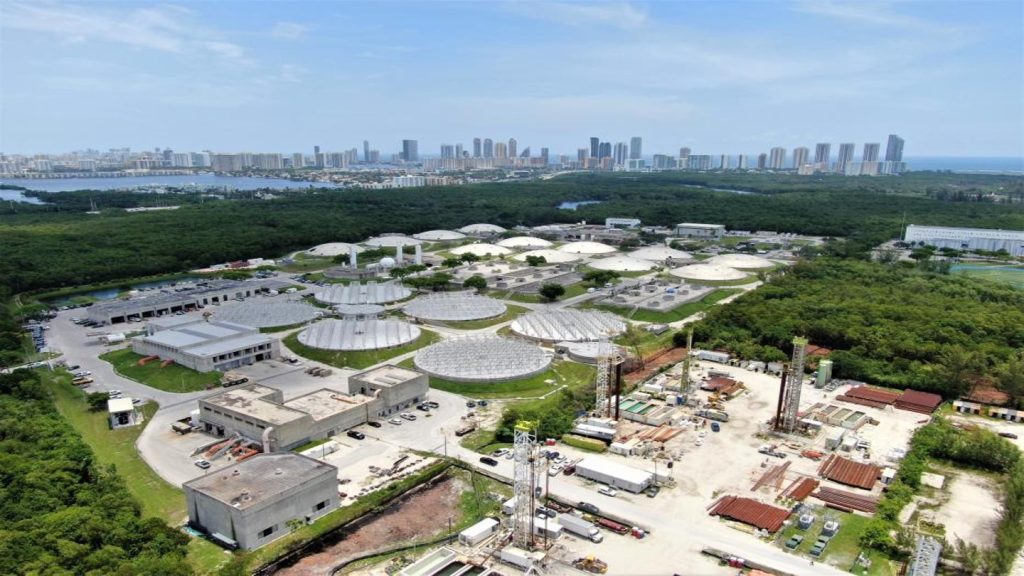
As the sun is the ultimate source of the Earth’s energy, the distinction between natural and artificial lighting may only be a matter of degree. Even our most advanced artificial lighting technologies are essentially transformations of energy that the sun originally embedded into biological matter. When we connect a new light-emitting diode (LED), metal halide lamp, or fluorescent tube to the local power grid and illuminate a space or a building, all we’ve really done is deliver some photons from one place to another as cleverly as we can, and perhaps a bit more efficiently than we did back when we were using whale-oil candles or incandescent bulbs as the medium.
Innovations in architectural lighting are taking place at both ends of that natural / artificial continuum. Product developers are stretching the technological envelope, while heightened energy awareness is tempering and refining the inevitable tendency to create ever-more dazzling effects. In a greener future, the most forward-thinking designs may no longer be the brightest, or the ones producing the most mindboggling effects of movement, colour, and information, but the ones that maximise the capabilities of unmediated sunlight, balancing the need for light with the control of heat.
Some of today’s most inventive structures are designed to guide light into places where it can do something useful. If the prototype for cutting-edge lighting in the age of excess was New York’s Times Square – busy, visually aggressive, overwhelming – the contemporary model is closer to Renzo Piano and FxFowle’s New York Times Building, open to daylight and advanced enough to keep a lid on its energy demands. The well-lit building of the 21st century is green and smart.
The incredible disappearing tower
While directing light into urban spaces can help heal troubled parts of a city, welcoming it into spaces that are highly visible produces benefits of a different order.
See Also:
At the New York Times, the 2007 opening of the new building marked a substantial investment: the design by Piano and FxFowle has won widespread acclaim, and the interiors by Gensler are among the city’s most desirable working spaces.
How well do you really know your competitors?
Access the most comprehensive Company Profiles on the market, powered by GlobalData. Save hours of research. Gain competitive edge.

Thank you!
Your download email will arrive shortly
Not ready to buy yet? Download a free sample
We are confident about the unique quality of our Company Profiles. However, we want you to make the most beneficial decision for your business, so we offer a free sample that you can download by submitting the below form
By GlobalDataPiano’s analysis of the paper’s needs led to what he calls ‘layers of transparency’: an unusually open lobby, a dual-elevator-core floor plan allowing unobstructed views, an interior garden with full-height birch trees, broad sightlines directly into the newsroom, and the signature brise soleil of ceramic rods that softens the building’s exterior profile while modulating the entry of daylight into the interior.
“We spent a lot of time thinking about light from the owner’s perspective,” emphasises David A Thurm, New York Times senior vice-president for operations. “It wasn’t driven by the architects; we forced the issue.” The sunscreen knocks out 50% of the solar thermal load, allowing exceptional transparency without exceptional cooling costs. The US lacks Germany’s legal requirement for universal access to natural lighting, but in this building every employee sees the sun. The daylight permeating the working spaces makes artificial lighting secondary – often unnecessary, even on an overcast day. The paper took the rare step of letting employees’ preference for light intensity overrule industry standards. Instead of the 50ft-candles customary in US offices, they started at 40, asked for reactions, got a consensus that this was too bright, and dropped to 30. Overall, says Thurm, the building uses less than 0.4W/ft² for lighting – a 70% energy saving over the local code standard.
Not every organisation can match the detailed attention the Times gave to its lighting, along with myriad other features including gas cogeneration facilities, under-floor heating and cooling, and bespoke signage. Still, thanks to upfront investments that will be recoupable over a long-term occupancy, the Times building achieves a vital ideal: it organises its energy inputs in ways that restore the perception that one is in a particular place, passing through distinct phases of each day, weather event, and season. Most office buildings do the opposite: isolate people from the Earth and its rhythms, making themselves an inescapable mediator of experience. It’s refreshing in several senses to occupy a large building graceful enough to get out of people’s way.
LEDs shine again
At Lightfair International 2009, held in New York by the International Association of Lighting Designers and the Illuminating Engineering Society of North America, the stories were about sustainability and solid-state lighting. It wasn’t so long ago that LEDs were chiefly used for home electronic components and auto dashboards. Now the LED can generate enough candlepower for street lighting and other outdoor applications as well as commercial and residential uses, and it outperforms the compact fluorescent lamp (CFL) in energy efficiency.
CFLs have been gaining on traditional incandescent and halogen bulbs in market share, in part because their dramatic energy-efficiency advantage has become apparent just as the EU has joined Australia and other jurisdictions in banning the high-heat incandescents entirely. Numerous Lightfair commentators, however, opined that the CFL would enjoy only a brief dominance in the marketplace. Consumers have not warmed to the harsh bluish light produced by some bargain CFLs, their mercury content creates end-of-product-life disposal problems and the truly dimmable CFL remains a rarity. Cold cathode fluorescents (CCFLs), offering greater compatibility with dimmers, lower running temperature, and lower mercury levels, may become a viable alternative at comparable cost, though their distribution remains limited.
LEDs’ instant-on feature, colour controllability, lack of mercury, performance at low temperatures and high humidity, combined with energy efficiency and long lamp life (up to 100,000 hours according to some claims), imply that the solid-state lighting industry is on the verge of maturity. The Clinton Climate Initiative selected the Dutch manufacturer Lemnis in 2007 to supply fully recyclable LED bulbs to the C40 ‘climate leadership’ cities at discounted prices, adding the momentum of global-scale pooled buying power to a technology shift that appears imminent.
Sunlight on any scale
Some of the strongest designs of recent years use the transformation of light as their theme. The 2004 RMJM / Enric Miralles Benedetta Tagliabue design for the Scottish Parliament uses skylights, glass fins, and the instantly recognisable oak window lattices to guide and modify sunlight in a building mandated by law to emphasise openness. Enric Ruiz-Geli and James Clar’s 2006 ‘artificial leaf’ design for the planned Hotel Prestige Forest, L’Hospitalet de Llobregat, Barcelona, sets out to accomplish a related effect electrically. Supported in stainless steel mesh encasing the building, 5,000 photovoltaic discs harvest sunlight and store the charge in independent batteries to power a ‘light cloud’ of LEDs. The discs help shade the building by day, and the ethereal cloak of LEDs bursts into light after nightfall, its programmed colours indicating the intensity of light collected during the day.
Creative approaches to light can appear as easily in a low-density suburban setting as in midtown Manhattan, and are not confined to high-budget projects. As buildings and communities struggle with the burdens of grid-dependent power, strategies for shifting to the source we receive abundantly every day with no cost and no externalities represent variations on a common-sense theme, fine-tuning our ability to use that source as directly as we can.







